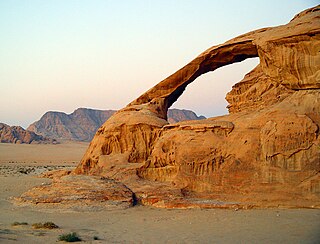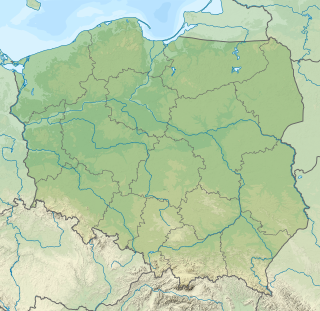
Bauxite is a sedimentary rock with a relatively high aluminium content. It is the world's main source of aluminium and gallium. Bauxite consists mostly of the aluminium minerals gibbsite (Al(OH)3), boehmite (γ-AlO(OH)) and diaspore (α-AlO(OH)), mixed with the two iron oxides goethite (FeO(OH)) and haematite (Fe2O3), the aluminium clay mineral kaolinite (Al2Si2O5(OH)4) and small amounts of anatase (TiO2) and ilmenite (FeTiO3 or FeO.TiO2). Bauxite appears dull in luster and is reddish-brown, white, or tan in color.

Kaolinite is a clay mineral, with the chemical composition Al2Si2O5(OH)4. It is an important industrial mineral. It is a layered silicate mineral, with one tetrahedral sheet of silica (SiO
4) linked through oxygen atoms to one octahedral sheet of alumina (AlO
6) octahedra. Rocks that are rich in kaolinite are known as kaolin or china clay.

Clay is a type of fine-grained natural soil material containing clay minerals. Clays develop plasticity when wet, due to a molecular film of water surrounding the clay particles, but become hard, brittle and non–plastic upon drying or firing. Most pure clay minerals are white or light-coloured, but natural clays show a variety of colours from impurities, such as a reddish or brownish colour from small amounts of iron oxide.

Shale is a fine-grained, clastic sedimentary rock, formed from mud that is a mix of flakes of clay minerals and tiny fragments of other minerals, especially quartz and calcite. Shale is characterized by its tendency to split into thin layers (laminae) less than one centimeter in thickness. This property is called fissility. Shale is the most common sedimentary rock.

Sedimentary rocks are types of rock that are formed by the accumulation or deposition of mineral or organic particles at the Earth's surface, followed by cementation. Sedimentation is the collective name for processes that cause these particles to settle in place. The particles that form a sedimentary rock are called sediment, and may be composed of geological detritus (minerals) or biological detritus. The geological detritus originated from weathering and erosion of existing rocks, or from the solidification of molten lava blobs erupted by volcanoes. The geological detritus is transported to the place of deposition by water, wind, ice or mass movement, which are called agents of denudation. Biological detritus was formed by bodies and parts of dead aquatic organisms, as well as their fecal mass, suspended in water and slowly piling up on the floor of water bodies. Sedimentation may also occur as dissolved minerals precipitate from water solution.

Weathering is the breaking down of rocks, soils, and minerals as well as wood and artificial materials through contact with water, atmospheric gases, and biological organisms. Weathering occurs in situ, and should not be confused with erosion, which involves the transport of rocks and minerals by agents such as water, ice, snow, wind, waves and gravity.

Dickite is a phyllosilicate clay mineral named after the metallurgical chemist Allan Brugh Dick, who first described it. It is chemically composed of 20.90% aluminium, 21.76% silicon, 1.56% hydrogen and 55.78% oxygen. It has the same composition as kaolinite, nacrite, and halloysite, but with a different crystal structure (polymorph). Dickite sometimes contains impurities such as titanium, iron, magnesium, calcium, sodium and potassium.

Mudrocks are a class of fine grained siliciclastic sedimentary rocks. The varying types of mudrocks include: siltstone, claystone, mudstone, slate, and shale. Most of the particles of which the stone is composed are less than 0.0625 mm and are too small to study readily in the field. At first sight the rock types look quite similar; however, there are important differences in composition and nomenclature. There has been a great deal of disagreement involving the classification of mudrocks. There are a few important hurdles to classification, including:
- Mudrocks are the least understood, and one of the most understudied sedimentary rocks to date
- It is difficult to study mudrock constituents, due to their diminutive size and susceptibility to weathering on outcrops
- And most importantly, there is more than one classification scheme accepted by scientists
Zeolite facies describes the mineral assemblage resulting from the pressure and temperature conditions of low-grade metamorphism.

Clastic rocks are composed of fragments, or clasts, of pre-existing minerals and rock. A clast is a fragment of geological detritus, chunks and smaller grains of rock broken off other rocks by physical weathering. Geologists use the term clastic with reference to sedimentary rocks as well as to particles in sediment transport whether in suspension or as bed load, and in sediment deposits.
Metakaolin is the anhydrous calcined form of the clay mineral kaolinite. Minerals that are rich in kaolinite are known as china clay or kaolin, traditionally used in the manufacture of porcelain. The particle size of metakaolin is smaller than cement particles, but not as fine as silica fume.
Ball clays are kaolinitic sedimentary clays that commonly consist of 20–80% kaolinite, 10–25% mica, 6–65% quartz. Localized seams in the same deposit have variations in composition, including the quantity of the major minerals, accessory minerals and carbonaceous materials such as lignite. They are fine-grained and plastic in nature, and, unlike most earthenware clays, produce a fine quality white-coloured pottery body when fired, which is the key to their popularity with potters.

Uranium ore deposits are economically recoverable concentrations of uranium within the Earth's crust. Uranium is one of the more common elements in the Earth's crust, being 40 times more common than silver and 500 times more common than gold. It can be found almost everywhere in rock, soil, rivers, and oceans. The challenge for commercial uranium extraction is to find those areas where the concentrations are adequate to form an economically viable deposit. The primary use for uranium obtained from mining is in fuel for nuclear reactors.
Channel iron deposits (CID) are iron-rich fluvial sedimentary deposits of possible Miocene age occupying meandering palaeochannels in the Early to Mid-Cenozoic Hamerlsey palaeosurface of Western Australia. Examples are also known from Kazakhstan.
Mineral alteration refers to the various natural processes that alter a mineral's chemical composition or crystallography.
The geology of Eswatini formed beginning 3.6 billion years ago, in the Archean Eon of the Precambrian. Eswatini is the only country entirely underlain by the Kaapvaal Craton, one of the oldest pieces of stable continental crust and the only craton regarded as "pristine" by geologists, other than the Yilgarn Craton in Australia. As such, the country has very ancient granite, gneiss and in some cases sedimentary rocks from the Archean into the Proterozoic, overlain by sedimentary rocks and igneous rocks formed during the last 541 million years of the Phanerozoic as part of the Karoo Supergroup. Intensive weathering has created thick zones of saprolite and heavily weathered soils.

An ephemeral acid saline lake is a lake that is relatively high in dissolved salts and has a low pH, usually within the range of <1 - 5 and does not have standing water year round. These types of lakes are identified by high concentrations of evaporite minerals, notably halite, gypsum, and various iron oxides allowing the lakes to become hypersaline. Low pH and evaporite minerals are positively correlated, allowing lakes with lower pH's to have visible evaporite mineral "crusts". Due to the highly unusual geochemistries present in these lake systems, they are considered an extreme environment in nature.

The Ciechocinek Formation, formerly known in Germany as the Green Series is a Jurassic geologic formation that extends across the Baltic coast, from Grimmen, Germany, to Nida, Lithuania, with its major sequence on Poland and a few boreholes on Kaliningrad. Dinosaur remains are among the fossils that have been recovered from the formation, not yet been allocated to a specific genus. The layers assigned to the formation are a group of sediments that differ from the those of the Posidonia Shale and other Toarcian formations of Europe. Most of the sediments of the Polish realm come from deltaic, fluvial and marine deposits. In the Polish realm there is also an abundance of siderite, attributed to mixed saline and marine action, with the rounding off of some due to transport by freshwater or sea currents. Its main equivalents are the Posidonia Shale, upper part of the Rydeback Member, Rya Formation, the Fjerritslev Formation, the Bagå Formation (Bornholm) or the Lava Formation (Lithuania). There are also coeval abandoned informal units in Poland: Gryfice Beds, Lower Łysiec beds, or the "Estheria series".
The soil matrix is the solid phase of soils, and comprise the solid particles that make up soils. Soil particles can be classified by their chemical composition (mineralogy) as well as their size. The particle size distribution of a soil, its texture, determines many of the properties of that soil, in particular hydraulic conductivity and water potential, but the mineralogy of those particles can strongly modify those properties. The mineralogy of the finest soil particles, clay, is especially important.











